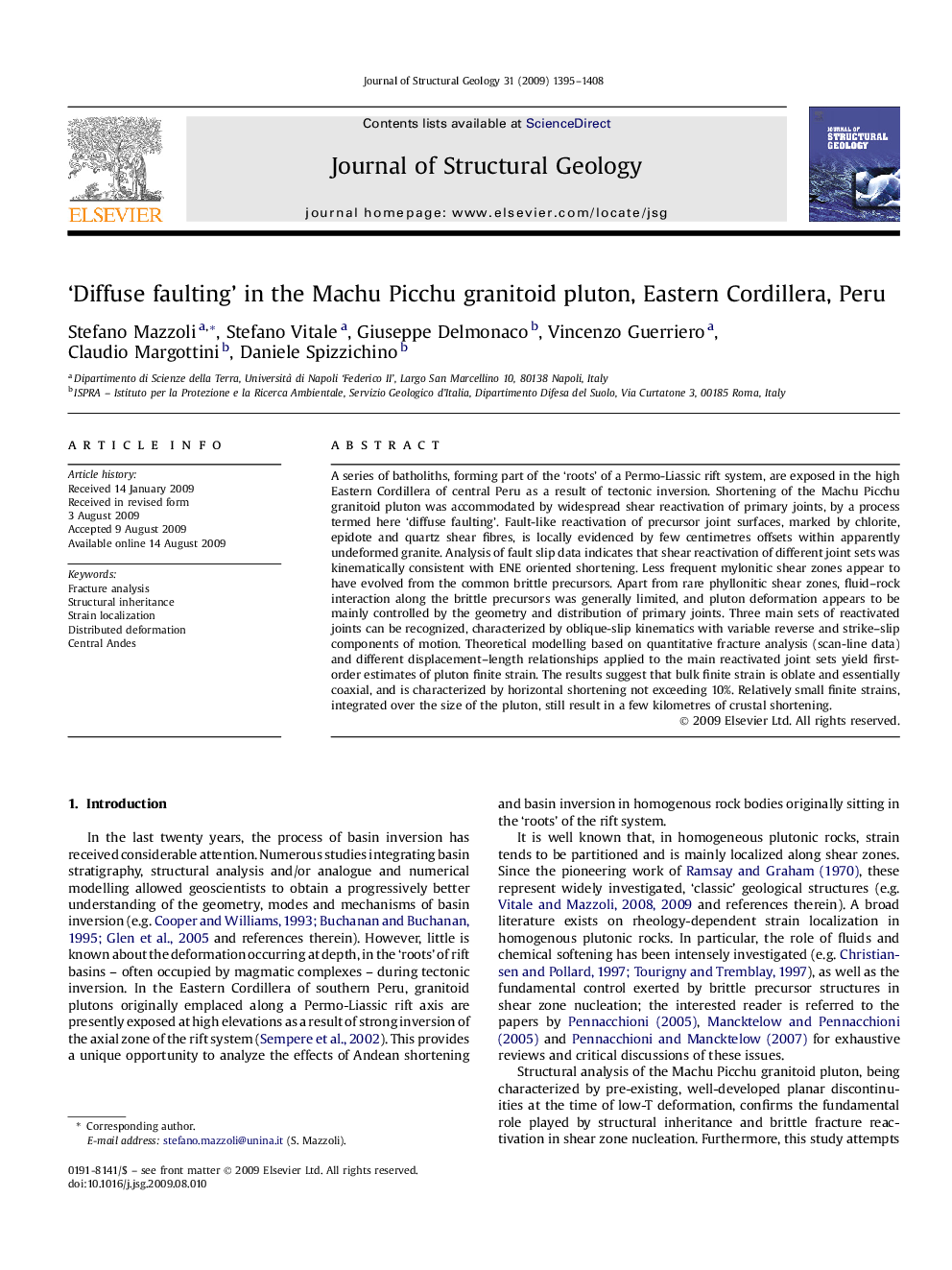| Article ID | Journal | Published Year | Pages | File Type |
|---|---|---|---|---|
| 4733445 | Journal of Structural Geology | 2009 | 14 Pages |
A series of batholiths, forming part of the ‘roots’ of a Permo-Liassic rift system, are exposed in the high Eastern Cordillera of central Peru as a result of tectonic inversion. Shortening of the Machu Picchu granitoid pluton was accommodated by widespread shear reactivation of primary joints, by a process termed here ‘diffuse faulting’. Fault-like reactivation of precursor joint surfaces, marked by chlorite, epidote and quartz shear fibres, is locally evidenced by few centimetres offsets within apparently undeformed granite. Analysis of fault slip data indicates that shear reactivation of different joint sets was kinematically consistent with ENE oriented shortening. Less frequent mylonitic shear zones appear to have evolved from the common brittle precursors. Apart from rare phyllonitic shear zones, fluid–rock interaction along the brittle precursors was generally limited, and pluton deformation appears to be mainly controlled by the geometry and distribution of primary joints. Three main sets of reactivated joints can be recognized, characterized by oblique-slip kinematics with variable reverse and strike–slip components of motion. Theoretical modelling based on quantitative fracture analysis (scan-line data) and different displacement–length relationships applied to the main reactivated joint sets yield first-order estimates of pluton finite strain. The results suggest that bulk finite strain is oblate and essentially coaxial, and is characterized by horizontal shortening not exceeding 10%. Relatively small finite strains, integrated over the size of the pluton, still result in a few kilometres of crustal shortening.
